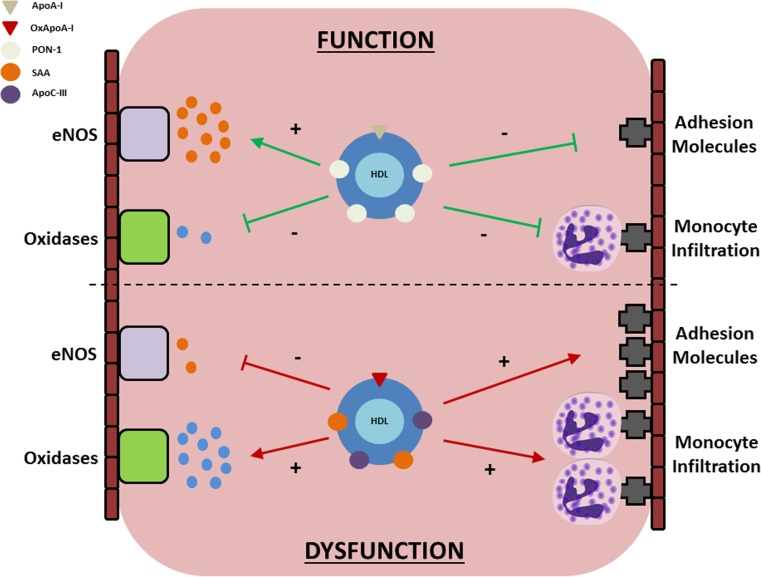Fig. 1.
Potential mechanisms linking dysfunctional HDL to vascular damage. In the absence of inflammation (top), HDL exerts vascular protective effects through its ability to increase endothelial NO bioavailability, decrease oxidative stress, and inhibit the expression of adhesion molecules on the vascular wall. In inflammatory states (bottom), however, numerous structural and functional changes may occur and compromise endothelial function. Beneficial proteins contained within the particle (e.g. ApoA-I, PON-1) are liable for oxidation or replacement, resulting in a noxious particle which impairs NO generation, amplifies oxidative stress, and promotes adhesion molecule expression and monocyte infiltration across the vascular wall

